 Welcome to the first article of my new rugby fitness blog!
Welcome to the first article of my new rugby fitness blog!
In this article, which is part I of a two-part series, I am going to cover a topic which will benefit any rugby player: speed training.
There are many gimmicks out there that claim to increase speed with magical drills, techniques or special exercises. Ninety-nine percent of the time these claims are false.
I am going to talk about three things that need to be incorporated into your training programme that really will help improve you speed on the pitch: sprint technique, explosive power and relative strength.
In part II of this series, I will show you exactly how to incorporate these into your training programme.
Sprint Technique
It is possible to use drills to improve your form, which can result in sprinting faster. However, all too often good form goes out the window in a match and is replaced by more instinctive running mechanics when a player has a ball in hand or are chasing down a ball carrier.
Be honest with yourself.
When you get the ball in hand with daylight in front of you and defenders chasing you, do you think of your breathing, running with high knees or swinging your arms properly?
So, while I think there should be a focus on technique in the off-season and early pre-season, there are four aspects to solid sprint form that I want you to consider at all times:
1. Use a correct arm swing with relaxed hands swinging from cheek to pocket;
2. Strike the ground with the front half of the foot and not the toes;
3. Drive your legs and follow through on each step finishing with full hip hyper-extension, straight leg and pointed foot; and
4. Lean forward slightly (not so far that you’re falling, but just enough to accelerate).
In Practice
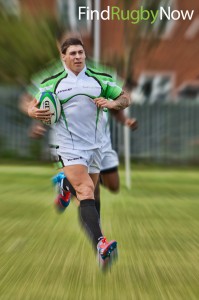 In order to get your form right, I first suggest that you make sure that you do not have any structural imbalances that are going to restrict you from opening up your stride, getting on the balls of your feet and swinging the arms back and forth with a relaxed shoulder and neck. You need to loosen off the pectorals, the anterior deltoids, the upper traps and biceps, in order to make sure you can hit the right positions when sprinting.
In order to get your form right, I first suggest that you make sure that you do not have any structural imbalances that are going to restrict you from opening up your stride, getting on the balls of your feet and swinging the arms back and forth with a relaxed shoulder and neck. You need to loosen off the pectorals, the anterior deltoids, the upper traps and biceps, in order to make sure you can hit the right positions when sprinting.
Nothing special is needed for this – just go through some static and dynamic stretches for each of those body parts prior to your workout. I like to do the static stretching at the start of the warm up and the dynamic stretches afterwards.
For the lower body, we need to have overall hip mobility so anything that opens up the ground will extend your stride length, which is beneficial. If you lengthen the hip flexors, quads and hamstrings you get better hip and knee extension towards the end of a stride. The same thing should be done to stretch these muscles. Start with static stretching and move into dynamic stretching during your warm up.
For form drills, I like three simple drills: Wall Sprints, Power Skips, and Seated Arm Pumps. If you include these at the end of your warm up, they will help your running form and activate all the muscles needed for the explosive work ahead.
Explosive Power
 The explosive power that you need for sprinting can be improved by focussing on jumping. If you increase your jump height and distance, your sprint speed will improve as well.
The explosive power that you need for sprinting can be improved by focussing on jumping. If you increase your jump height and distance, your sprint speed will improve as well.
Explosive power requires either maximal strength or absolute strength – the ability to produce a hefty amount of force without time being a limiting factor on force production. Think of things such as heavy all-out squats, bench presses and deadlifts where you have to grind to get the rep.
Rate of force development is also very important. This is how much force can be mustered in a short amount of time. Olympic lifting is a great example of this. Top lifters produce an ungodly amount of force from a static start with the weight on the floor.
In Practice
When broken down to its simplest form, explosive power has two components: rate of force development and absolute strength. If we improve these two things you’ll be faster as long as your relative body strength has increased.
That means either maintain your bodyweight, reduce your body fat, or if you increase your bodyweight your strength has to increase to a point that your relative body strength is the same or greater.
A simple way to check this is to take your 1RM and divide it by the body weight on which you achieved 1RM. If you re-test and regardless of the change in bodyweight this number has gone up, then this is good news since it means that your maximal and relative strength has increased.
Rate of Force Development
In order to improve the rate of force development, you need to do exercises that are explosive in nature. The exercises that I think you should use year-round are as follows:
Single Jumps
These are the simple tried and true moves, where there is one take off and one landing. This category includes jumps such as broad jumps, vertical jumps, box jumps, seated box jumps and single leg jumps.
Reactive Jumps
These are jumps that include multiple jumps and landings. This category includes triple broad jumps, one-leg triple jumps, bounding skipping, hopping and hurdle jumps.
These should be done with the intent of exploding out for the first jump and spending as little time on the floor as possible until the final landing, which should be landed perfectly.
These jumps will help your rate of force development, your overall athleticism and, most importantly, improve your reactive strength.
When you get to high speeds you spend less time in contact with the ground. These jumps will teach you to maximize the contact time you have and you will begin producing more force per contact with the ground. When you try to accelerate or when you get to top speed you have a finite amount of contact time – if you can’t produce enough force with each ground contact you will not travel faster, so these moves are very important.
True Plyometrics: The Shock Method
These they are for people with good athletic ability with no limiting injuries and that can squat and deadlift at least 1.5 x their body weight. Although there are exceptions to this (I have used these myself before I achieved these numbers), but as a rule of thumb I would err on the side of caution and achieve these results before you attempt these moves.
This method is very hard on the body, so you will want to use it only once or twice a week for no more than 6 weeks with at least four weeks between cycles and only 1-3 cycles per year. This stops your body from becoming over-stressed or adapting to the method.
Each time you use these exercises you should achieve the same increase to your power that you achieved the very first time. By using the method sparingly you ensure it is effective with each use and reduces the risk of injury.
Firstly, a bit of background on the shock method. It is designed to make your body more efficient at absorbing the landing and reversing that downward movement for take-off again. You may have heard the physics rule that ‘Every action has an equal and opposite reaction’. Well, when you land and put force into the ground it pushes it back equally. The shock method exercises enable your body to essentially borrow the force the ground gives back into your body on top of the force your own body will produce. It also makes your body do it quicker.
These plyometric exercises are the real deal when it comes to boosting reactive strength. The two big benefits that we get from these exercises are (1) an increase in your body’s ability to decelerate (absorb the landing) and (2) decrease in the time required between absorbing the landing (eccentric motion) to jumping (concentric movement). This is known as coupling time.
The two exercises are the depth drop and depth jump. The depth drop or altitude drop is exactly what it sounds like. Stand on a large box or elevated ledge and drop off and land. The position you land in will depend on which you need to strengthen. Typically a high 1/4 squat position will cause the force to be focused mostly into the ankle.
The deeper the position, the more the force will be taken up by the hips and knees. Regardless of position, you should land on the balls of the feet with the head up. To get the most benefit out of the landing, hold that landing position for 3-5 seconds. And don’t forget to land SILENTLY like a cat.
The depth jump is done off of a slightly smaller drop; you drop down and land in the 1/4 squat or whichever landing you are doing, and then launch yourself up into a vertical jump. The important thing is to reduce the coupling time, which means that you want to be touching the floor upon landing for no longer than one second to get the full effect of the plyometric.

Above: A Russian jumper demonstrating perfect depth drop/jump form. Take notice of the relaxed good posture upon stepping off the platform, to the good landing position on the forefoot before exploding into the jump!
Maximal Strength
To increase your maximal strength you need to train with a low number of repetitions (1-5 reps) in the 85-95% rep range, staying away from failure and with around 10-20 reps of total volume for the heavier compound movements.
This is not to say that you shouldn’t ever train with higher repetition movements, but if your training is focused on getting stronger, any higher rep exercises you use must feed back into the heavier movements by making them stronger thus feeding our goal!
The exercises that we would use for the heavier work would be
● Squats
● Front Squats
● Deadlifts
● Bench Presses
● Over Head Presses (Both Strict and Push)
● Bent Over Rows
● Chin Ups (Weighted when possible)
The exercises that can be very useful when used with lighter weight for higher rep ranges are things that will help increase mobility, core strength, unilateral leg strength and hip strength. Exercises that are good to use with higher reps as auxiliary work when training for power are:
● Lunges, Bulgarian Split Squats, Pistol Squats, One Leg Romanian Deadlifts for the squatting and deadlifting auxiliary work.
● Dumbbell Benches (incline, Flat, floor), press ups, dips, DB shoulder presses for the pressing moves
● Dumbbell Bent over rows, lat pull downs, chin-ups with various grips, Bodyweight horizontal rows, face pulls and rear delt raises for pulling moves.
Relative Strength
I think that this is the most important aspect of speed work. It does not matter how strong you get, if your strength compared to your bodyweight does not increase, your jumping and sprinting will not improve!
You should aim for a deadlift and squat of 1.5 x your body weight and a bench press at 1 x your body weight. Also, you should be able to manage at least 5 chin ups.
If you can achieve these levels of strength and build upon them, you will be in good stead to use some of the techniques that I will be providing you in Part II.
A study by Peter Weyland on the speed of sprinter leg movements found that the more force production per kilo/pound of bodyweight that is applied with each step, the more effective this movement is for running faster. So, the more force you produce per kilo (or pound) of bodyweight the faster you will be.
Part II
In Part II, I will show you exactly how to put together a program from start to finish to push your speed through the roof!
I hope you can all take something away from this article. If you have questions about this topic, or anything relating to rugby strength and conditioning, please do not hesitate to contact me by posting a comment below.
References
1. Weyland, Peter G., et al. “Faster top running speeds are achieved with greater ground forces not more rapid leg movements.” Journal of applied physiology 89.5 (2000): 1991-1999.








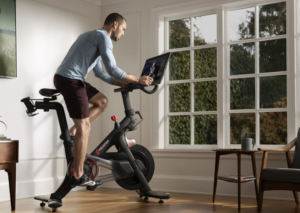 When most people hear the word “Peloton” they think of an expensive black bike with shiny red buttons and that controversial commercial where the husband gifted his wife a Peloton for Christmas.
When most people hear the word “Peloton” they think of an expensive black bike with shiny red buttons and that controversial commercial where the husband gifted his wife a Peloton for Christmas.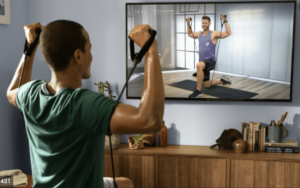 If the app interests you, Peloton is currently offering a 30 day FREE TRIAL, so why not give it a try? Check it out
If the app interests you, Peloton is currently offering a 30 day FREE TRIAL, so why not give it a try? Check it out 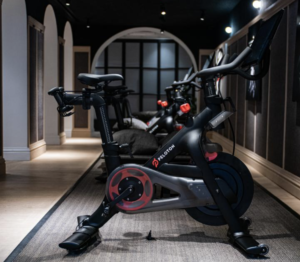
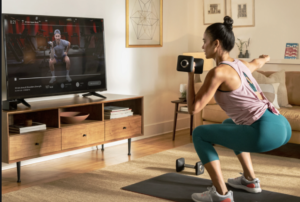
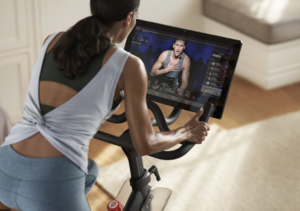 This article would not be complete, however, if we did not acknowledge some of the delivery issues that have been plaguing Peloton over the last year. Most of the delivery issues seem to affect U.S. deliveries, however, the UK deliveries have been affected as well.
This article would not be complete, however, if we did not acknowledge some of the delivery issues that have been plaguing Peloton over the last year. Most of the delivery issues seem to affect U.S. deliveries, however, the UK deliveries have been affected as well.







